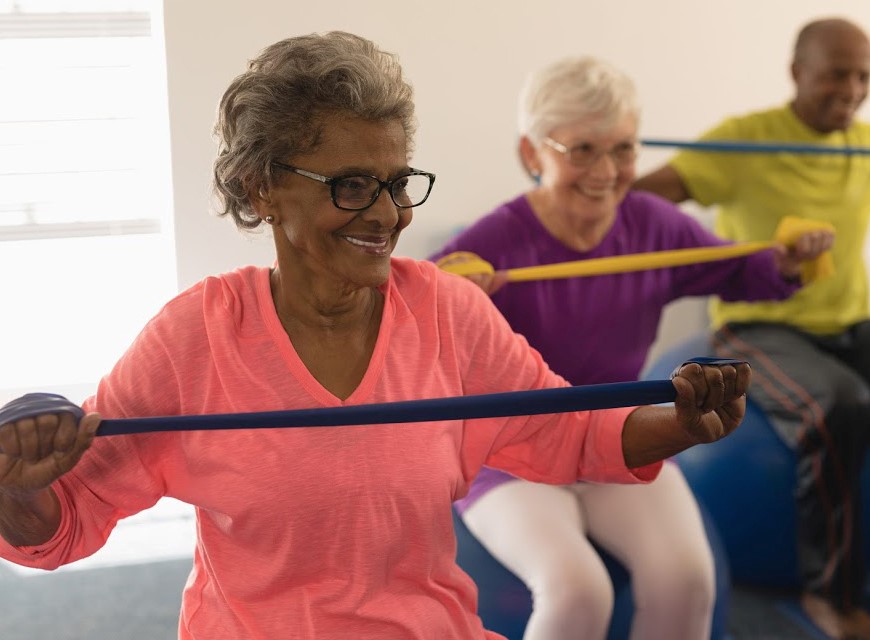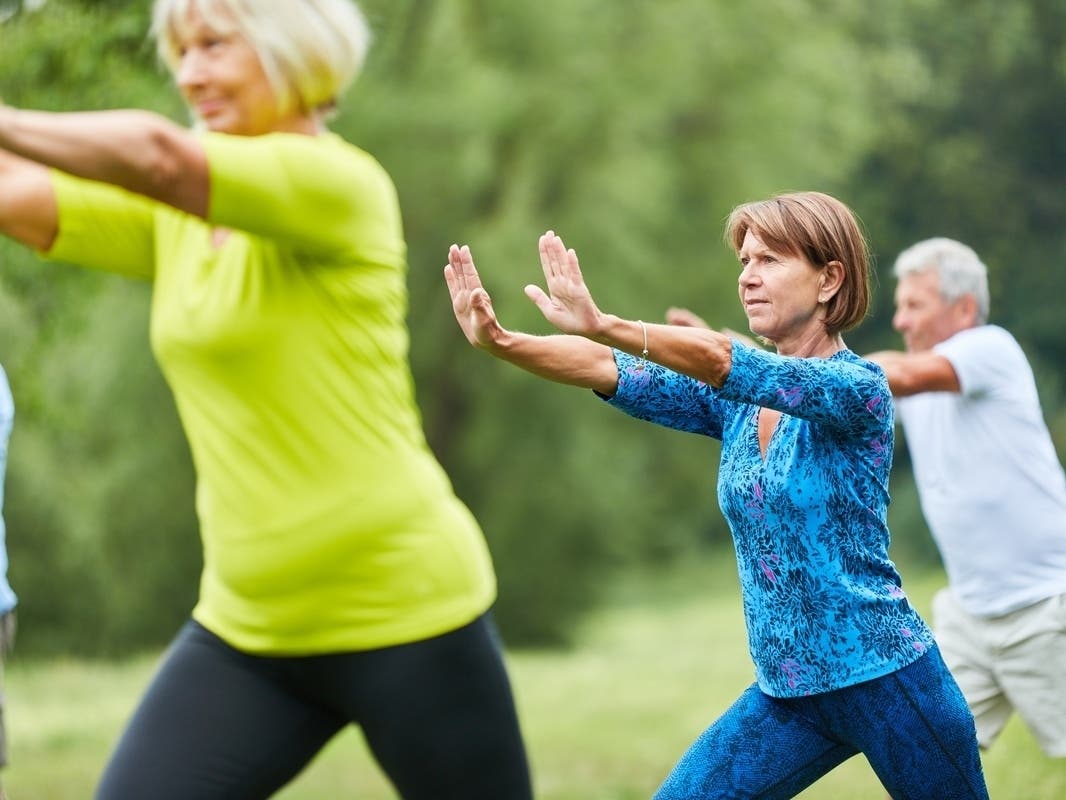Maintaining physical and mental well-being is a lifelong pursuit, and as we age, it becomes increasingly important to find activities that can help us stay healthy, active, and independent. Pilates, a low-impact exercise system focused on strengthening the core, improving flexibility, and enhancing balance, has emerged as a valuable tool for seniors seeking to improve their overall health and quality of life.
Pilates for Seniors

Pilates is a versatile exercise method that can be adapted to suit the needs and abilities of individuals of all ages, including seniors. By focusing on controlled movements, proper posture, and breath control, Pilates provides a gentle yet effective way for older adults to improve their physical and mental well-being.
Understanding the Pilates Principles
The foundation of Pilates is built upon six key principles: Concentration, Control, Centering, Precision, Breath, and Flow. These principles guide the practitioner to maintain a mindful and intentional approach to each exercise, which can be particularly beneficial for seniors.
- Concentration: Pilates emphasizes the importance of mental focus and awareness during the exercises, helping seniors to stay present and engaged in the moment.
- Control: The Pilates method teaches practitioners to move with control and precision, which can help seniors develop better muscle control and coordination.
- Centering: Pilates focuses on strengthening the “core,” which includes the muscles of the abdomen, lower back, and hips. A strong core can improve posture, balance, and overall stability.
- Precision: Pilates exercises are performed with a high degree of attention to detail, ensuring that each movement is executed correctly and effectively.
- Breath: Proper breathing techniques are integrated into Pilates, which can help improve lung capacity and oxygen circulation.
- Flow: Pilates exercises are designed to flow seamlessly from one movement to the next, promoting a sense of fluidity and grace.
By adhering to these principles, seniors can experience the full benefits of Pilates and improve their overall physical and mental well-being.
Pilates Exercises for Seniors
Pilates exercises can be adapted to suit the needs and abilities of seniors, ranging from beginner-level mat exercises to more advanced equipment-based routines. Some common Pilates exercises that are particularly beneficial for older adults include:
- Pelvic Tilts: This exercise strengthens the core muscles and improves spinal mobility.
- Heel Slides: This exercise helps to improve leg strength and flexibility.
- Shoulder Bridges: This exercise strengthens the lower body and improves hip mobility.
- Leg Circles: This exercise improves hip and leg flexibility.
- Arm Circles: This exercise strengthens the upper body and improves shoulder mobility.
Seniors should start with beginner-level exercises and gradually progress to more challenging routines as their strength, flexibility, and balance improve.
Pilates Equipment for Seniors
While Pilates can be practiced using just a mat, the use of specialized equipment can provide additional support and challenge for seniors. Some common Pilates equipment that can be beneficial for older adults includes:
- Reformer: The Reformer is a spring-loaded bed that provides resistance and support, which can be particularly helpful for seniors with balance or mobility issues.
- Stability Ball: The stability ball can be used for a variety of Pilates exercises, helping to improve core strength and balance.
- Resistance Bands: Resistance bands can be used to add additional challenge to Pilates exercises, targeting specific muscle groups.
- Foam Rollers: Foam rollers can be used for self-massage and myofascial release, helping to improve flexibility and reduce muscle tension.
It’s important for seniors to work with a qualified Pilates instructor to ensure that they are using the equipment properly and safely.
Pilates for Seniors with Arthritis

Arthritis is a common condition that affects many older adults, causing pain, stiffness, and reduced mobility in the joints. Pilates can be a valuable tool for seniors with arthritis, as it can help to improve joint function, reduce pain, and enhance overall quality of life.
Reducing Joint Pain and Inflammation
Pilates exercises that focus on range of motion and joint mobility can help to reduce joint pain and inflammation associated with arthritis. By gently moving the joints through their full range of motion, Pilates can help to improve circulation, reduce stiffness, and promote the production of synovial fluid, which lubricates the joints.
| Exercise | Benefits |
|---|---|
| Pelvic Tilts | Improves spinal mobility and reduces lower back pain |
| Leg Circles | Increases hip mobility and reduces hip pain |
| Wrist Circles | Improves wrist mobility and reduces wrist pain |
In addition to the physical benefits, Pilates can also help to reduce the mental and emotional stress associated with living with arthritis. The focus on breath control and mindfulness can help seniors to manage pain and improve their overall well-being.
Improving Muscle Strength and Flexibility
One of the key benefits of Pilates for seniors with arthritis is its ability to improve muscle strength and flexibility. By strengthening the muscles that support the joints, Pilates can help to reduce the stress and strain on the joints, ultimately reducing pain and improving mobility.
- Strengthening the core muscles can improve posture and reduce the burden on the joints.
- Improving flexibility in the joints can help to reduce stiffness and improve range of motion.
- Pilates exercises that focus on balance and stability can help to reduce the risk of falls, which can be a significant concern for seniors with arthritis.
Adapting Pilates for Seniors with Arthritis
When practicing Pilates with arthritis, it’s important to work with a qualified instructor who can modify the exercises to accommodate individual needs and limitations. Some key considerations when adapting Pilates for seniors with arthritis include:
- Avoiding high-impact exercises that may exacerbate joint pain
- Incorporating low-impact exercises that focus on range of motion and joint mobility
- Using props and equipment, such as resistance bands or stability balls, to provide additional support and modify the exercises
- Listening to the body and adjusting the intensity or duration of the exercises as needed
- Incorporating rest and recovery periods to allow the joints to recover
By working closely with a Pilates instructor and making the necessary adaptations, seniors with arthritis can safely and effectively incorporate Pilates into their overall health and wellness routine.
Pilates for Seniors: Benefits
Pilates offers a wide range of benefits for seniors, from improved physical function to enhanced mental well-being. By incorporating Pilates into their lifestyle, older adults can experience a improved quality of life and greater independence.
Improved Strength and Flexibility
One of the primary benefits of Pilates for seniors is its ability to improve overall strength and flexibility. The Pilates method focuses on strengthening the core muscles, which can support better posture and balance, and improve the function of the entire musculoskeletal system.
- Pilates exercises that target the major muscle groups, such as the legs, arms, and back, can help to maintain and even increase muscle mass, which is particularly important for older adults who may be at risk of sarcopenia (age-related muscle loss).
- Improved flexibility can help to reduce the risk of falls and injuries, as well as improve mobility and range of motion.
- Pilates can also help to counteract the effects of aging on the joints, such as stiffness and reduced mobility, by improving joint flexibility and range of motion.
Enhanced Balance and Stability
Maintaining good balance and stability is crucial for seniors, as it can help to reduce the risk of falls and improve overall mobility and independence. Pilates exercises that focus on core strength, posture, and proprioception (the body’s ability to sense its position and movements) can help to improve balance and stability in older adults.
- Exercises that challenge the body’s stability, such as standing on one leg or performing controlled movements on unstable surfaces, can help to improve balance and reduce the risk of falls.
- Pilates can also help to improve the body’s proprioceptive awareness, which can help seniors navigate their environment more safely and confidently.
- Improved balance and stability can also enhance seniors’ ability to perform everyday tasks, such as walking, climbing stairs, and getting in and out of chairs, with greater ease and confidence.
Improved Cardiovascular Health
While Pilates is not typically considered a high-intensity cardio workout, it can still provide benefits for the cardiovascular system. Pilates exercises that incorporate movement, such as the Reformer, can help to increase heart rate and improve overall cardiovascular fitness.
- Pilates can help to improve circulation, which can help to reduce the risk of cardiovascular disease and improve overall heart health.
- The focus on controlled breathing in Pilates can also help to improve lung capacity and respiratory function, which can be particularly beneficial for seniors.
- Incorporating Pilates into a comprehensive exercise routine that includes other forms of cardiovascular exercise, such as walking or swimming, can provide even greater benefits for the heart and circulatory system.
Enhanced Mental Well-being
Pilates is not just a physical exercise, but also a mental practice that can have a profound impact on the overall well-being of seniors. The focus on mindfulness, breath control, and body awareness inherent in Pilates can help to reduce stress, improve mood, and enhance cognitive function.
- The meditative aspects of Pilates, such as the focus on breath control and mental concentration, can help to reduce anxiety and depression, which are common issues for older adults.
- Pilates can also help to improve cognitive function, including memory, attention, and problem-solving skills, by challenging the mind to stay focused and engaged during the exercises.
- The social aspect of practicing Pilates in a group setting can also provide a sense of community and connection, which can help to alleviate feelings of isolation and loneliness that are often experienced by seniors.
Improved Quality of Life
Ultimately, the benefits of Pilates for seniors extend far beyond physical improvements. By enhancing strength, flexibility, balance, cardiovascular health, and mental well-being, Pilates can help to improve the overall quality of life for older adults, enabling them to maintain their independence and enjoy their golden years with greater ease and confidence.
- Seniors who practice Pilates regularly may experience a reduced risk of falls and injuries, which can help to maintain their ability to live independently and perform daily activities with greater ease.
- Improved physical and mental well-being can also help to reduce the risk of chronic health conditions, such as heart disease, diabetes, and cognitive decline, which are common in older adults.
- By promoting a greater sense of overall well-being, Pilates can help seniors to enjoy a higher quality of life, with increased mobility, confidence, and joy in their everyday activities.
As the population of older adults continues to grow, the need for effective, low-impact exercise options that can improve overall health and well-being has become increasingly important. Pilates, with its focus on strength, flexibility, balance, and mindfulness, offers a compelling solution for seniors seeking to maintain their independence and enjoy a higher quality of life.
By incorporating Pilates into their regular exercise routine, seniors can experience a wide range of physical and mental benefits, from improved joint function and reduced risk of falls to enhanced cognitive function and greater overall well-being. With the guidance of a qualified Pilates instructor and the right adaptations to accommodate individual needs and limitations, seniors can safely and effectively integrate Pilates into their lifestyle and embark on a path towards improved health and happiness.
As the benefits of Pilates for seniors become more widely recognized, it is our hope that more older adults will be inspired to explore this transformative exercise method and reap the rewards of improved physical, mental, and emotional well-being. By prioritizing their health and wellness, seniors can not only maintain their independence but also discover new opportunities for growth, joy, and fulfillment in their golden years.


